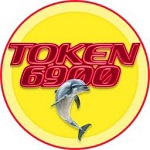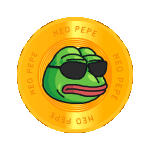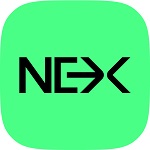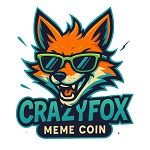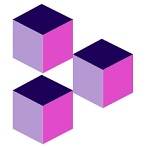 | Block3 (BL3)ICO Ongoing Jul 01, 2025 – Jul 30, 2025Block3 introduces generative gaming AI, allowing anyone to create any game they can imagine with a simple text prompt. No devs, no designers, no budget needed—Trinity, our proprietary model, completely upends the entire gaming industry. IMPORTANT: By investing in this business you agree to ourDisclaimer. All information including our rating, is provided merely for informational purposes. CryptoTotem does not provide investment advice. |
Overview
|
What is Block3
Block3 introduces text-to-game generative AI, allowing anyone to create entire video games with a simple text prompt. No coding, design, or development experience needed: an idea is all you need to create the next triple-A blockbuster.
The gaming industry is rigged to favor major studios with near-unlimited resources, while indie devs fight over scraps. Block3 levels the playing field: the strongest creative voices can now give life to their ideas thanks to the power of AI.
DetailsPublic sales: Jul 01, 2025 - Jul 30, 2025Token supply: 10,000,000,000 BL3 LegalBlockchain Platform: SolanaRegistration year: 2024 | Token infoTicker: BL3Type: Utility-token Token standard: SPL Token price in USD: 1 BL3 = 0.0105 USDT Accepted currencies: USDT, SOL, BNB, ETH Token distribution: Investors - 30% Liquidity - 10% Team - 5% Marketing - 10% Ecosystem - 20% Product - 25% |
Block3 Roadmap
- Set up core infrastructure:
- Establish cloud computing environment (e.g., AWS, Google Cloud)
- Configure distributed computing systems for ML training
- Set up data storage and management systems
- Develop initial ML model architecture:
- Design neural network architecture for 3D scene understanding
- Implement basic training pipeline
- Create data ingestion system:
- Develop APIs for user-uploaded gameplay footage
- Implement data preprocessing and cleaning algorithms
- Set up data validation and quality assurance processes
- Establish version control and CI/CD pipelines:
- Set up Git repositories
- Implement automated testing and deployment workflows
- Implement transparent data training system:
- Develop data provenance tracking
- Create user dashboard for monitoring data contributions
- Implement data anonymization and privacy protection measures
- Enhance ML model training:
- Fine-tune model architecture based on initial results
- Implement transfer learning from pre-trained models
- Develop data augmentation techniques
- Create initial data annotation tools:
- Develop user interface for tagging and describing uploaded content
- Implement semi-automated annotation suggestions
- Establish ML model evaluation metrics:
- Define key performance indicators (KPIs) for model quality
- Implement automated evaluation pipelines
- Develop core 3D engine components:
- Implement rendering pipeline (OpenGL or Vulkan)
- Create basic physics simulation
- Develop scene graph and object management system
- Integrate ML model with 3D engine:
- Implement inference pipeline for real-time scene generation
- Develop system for dynamically loading ML-generated content
- Create basic world-building tools:
- Develop simple terrain generation system
- Implement basic object placement and manipulation tools
- Establish asset pipeline:
- Create system for importing and optimizing 3D models
- Implement texture and material management
- Enhance ML model for content generation:
- Implement generative adversarial networks (GANs) for 3D asset creation
- Develop natural language processing (NLP) system for text-to-scene generation
- Create character system:
- Implement character models with skeletal animation
- Develop basic AI for character behavior and pathfinding
- Implement spatial awareness and interaction:
- Develop object interaction system
- Implement collision detection and response
- Enhance world-building tools:
- Create procedural generation systems for landscapes, vegetation, and structures
- Implement more advanced object manipulation and scene editing tools
- Implement advanced character AI:
- Develop more sophisticated behavior trees and decision-making algorithms
- Implement natural language generation for character dialogue
- Enhance scene understanding and generation:
- Improve ML model to handle more complex and diverse scenes
- Implement style transfer techniques for scene aesthetics
- Develop user experience and interface:
- Create intuitive UI for scene creation and manipulation
- Implement real-time collaboration features
- Optimize performance:
- Implement level-of-detail (LOD) systems
- Optimize rendering and physics simulations for various hardware configurations
- Implement prompt-based experience generation:
- Develop natural language interface for scene creation
- Integrate ML models for interpreting and executing user prompts
- Create first playable experiences:
- Develop sample games and interactive scenarios
- Implement basic gameplay mechanics and systems
- Establish feedback and iteration loop:
- Develop analytics and telemetry systems
- Create user feedback channels and bug reporting tools
- Optimize and polish:
- Perform extensive testing and bug fixing
- Optimize performance across various devices and platforms
- Implement mod support and SDK:
- Develop plugin architecture for user-created content
- Create documentation and examples for third-party developers
- Enhance multiplayer capabilities:
- Implement networking layer for real-time multiplayer experiences
- Develop server infrastructure for hosting user-created worlds
- Improve content creation tools:
- Develop more advanced AI-assisted design tools
- Implement version control and collaboration features for user-created content
- Establish marketplace and sharing features:
- Develop system for users to share and monetize their creations
- Implement content curation and recommendation systems
- Official launch of Trinity:
- Finalize all systems and features
- Ensure scalability and stability of infrastructure
- Regular updates and feature additions based on user feedback
- Ongoing ML model training and refinement
- Foster community of developers and content creators
- Establish partnerships for content and technology integrations
- Explore integration of emerging technologies (e.g., VR/AR, haptics)
- Investigate advanced AI techniques for more realistic and dynamic world simulation
Project team



